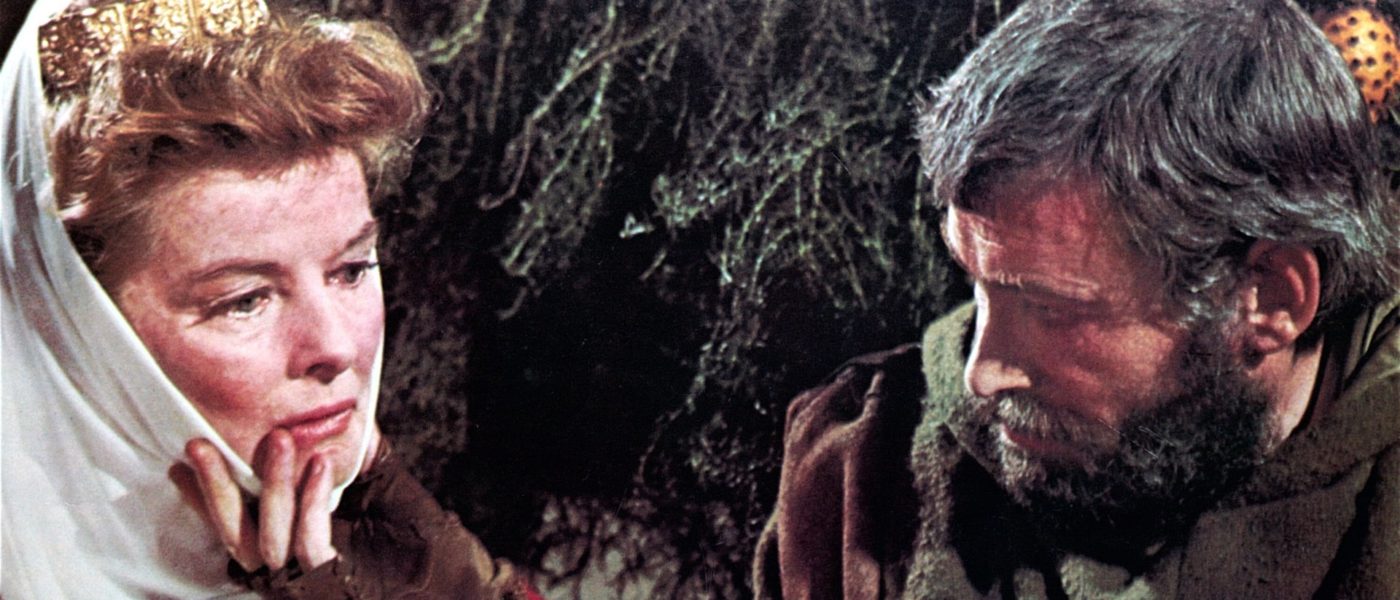The Frost-Nipped Lion At 50
DIRECTED BY ANTHONY HARVEY/1968
STREET DATE: MARCH 13TH, 2018/KINO LORBER STUDIO CLASSICS
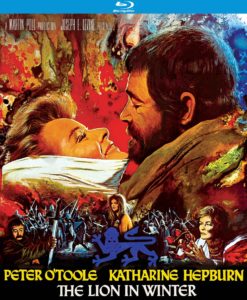 Finding a certain unabashed pleasure in symmetrical film-viewing, both in balanced screen compositions and in a rigorously-constructed narrative, one should further admit undeniable satisfaction in finding the absolute right time to view a perfect or near-perfect film. Watching Kino Lorber’s anniversary Blu-ray of director Anthony Harvey’s The Lion in Winter, based on James Goldman’s 1966 play and adapted by the author for the screen, certainly gains immeasurably when aware that exactly 50 years have passed since Henry II (Peter O’Toole), Eleanor of Aquitaine (Katharine Hepburn), and warring princes Richard (Anthony Hopkins), Geoffrey (John Castle), and John (Nigel Terry) first enacted inter-family strife on Christmas in God’s Year 1183 at the British-occupied castle of Chinon. With the dread sovereign himself appearing on-screen in the winter of his years, painfully beholding the rack and ruin his royal heirs and empire have become over the past strife-filled half-century, it might also be eminently appropriate to the drama’s brittle and imperishable dialogue to ask, “How fares The Lion at 50?”
Finding a certain unabashed pleasure in symmetrical film-viewing, both in balanced screen compositions and in a rigorously-constructed narrative, one should further admit undeniable satisfaction in finding the absolute right time to view a perfect or near-perfect film. Watching Kino Lorber’s anniversary Blu-ray of director Anthony Harvey’s The Lion in Winter, based on James Goldman’s 1966 play and adapted by the author for the screen, certainly gains immeasurably when aware that exactly 50 years have passed since Henry II (Peter O’Toole), Eleanor of Aquitaine (Katharine Hepburn), and warring princes Richard (Anthony Hopkins), Geoffrey (John Castle), and John (Nigel Terry) first enacted inter-family strife on Christmas in God’s Year 1183 at the British-occupied castle of Chinon. With the dread sovereign himself appearing on-screen in the winter of his years, painfully beholding the rack and ruin his royal heirs and empire have become over the past strife-filled half-century, it might also be eminently appropriate to the drama’s brittle and imperishable dialogue to ask, “How fares The Lion at 50?”

Rather well, fortunately. Regrettably lapsing into the first person, along with a most unforgivable series of personal anecdotes, I had been keenly aware of the movie several years before first seeing it on VHS, as the 1968 filming of The Lion in Winter played into several of my own family’s legends. Locally debuting at downtown Madison, WI’s Bartell Theater, off the Capitol Square, when the deluxe, one-screen movie house opened that fall, the verbal sparring and near-relational plotting – against the background of French and Welsh medieval exteriors and English studio-recreated interiors – apparently accompanied my parents’ first date. Growing up, an early obsession with the Robin Hood legend, inspired by multiple viewings of Errol Flynn in 1938’s all-time adventure classic The Adventures of Robin Hood, and further fueled by voracious readings of various re-tellings by Howard Pyle, J. Walker McSpadden, and Roger Lancelyn Green, gave me an equally keen awareness of the legends surrounding the English monarchs Henry II, Richard I, and John, who all figure strongly into England’s national mythology.
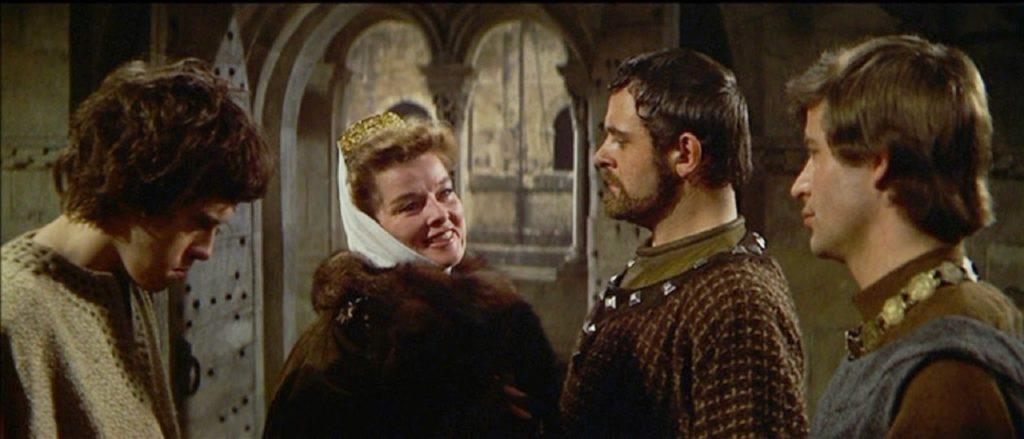
The passionate warrior, the ruthless glory-seeker, and the greedy land baron – Henry, Richard, and John, respectively – step out of myth and into history in James Goldman’s historical drama, with cunning middle son Geoffrey (“You know where extra princes go?”) and all-knowing Eleanor (“We are the barbarians!”) making a family gathering ‘round the holidays for the ages. A barely-bearded French king in young Phillip II (Timothy Dalton), and Phillip’s sister, long-betrothed to Henry’s constantly-shifting heir, Alais (Jane Merrow), complete the dramatis personae of political intrigue and gamesmanship, which remains frighteningly relevant in almost any historical context. As opposingly and imposingly played by screen legends O’Toole and Hepburn – the latter introduced weaving tapestries in her prison-turret and later floating down the Thames in a royal barge, devising all manner of stratagem to torment her estranged husband – the sins of the parents are definitively visited on their warring issue, who are played with equal star quality by the debuting or near-debuting Hopkins, Terry, and Castle.
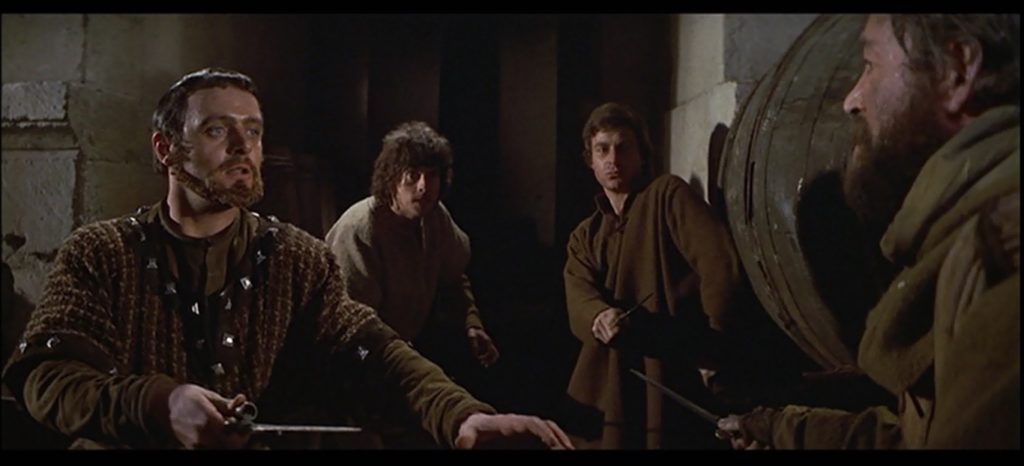
Larger-than-life playing is balanced by decidedly down-to-earth stylistics, emphasizing the dirt and grit of the medieval period despite the occasional, and possibly deliberate, anachronism. Though gift-giving, Christmas trees, and Yuletide celebration may not have been observed in either Medieval England or France – to say nothing of the spoken language of the Norman English court, which would have used a patois of French and Latin as opposed to English – The Lion in Winter feels scrupulously authentic where it dramatically matters, and in this respect the beautifully-chosen locations, the meticulously-designed sets – and especially Douglas Slocombe’s sun-tarnished and torch-lit photography and John Barry’s brilliant brass-and-vocal score – revive the haunting spell of a long-lost age to great effect. Rarely has endless war and fever-pitched violence been so accurately conveyed in two hours and fifteen minutes of characters stalking up and down the stairwells, ramparts, yards, halls, bedrooms, and dungeons of film-created castle interiors.
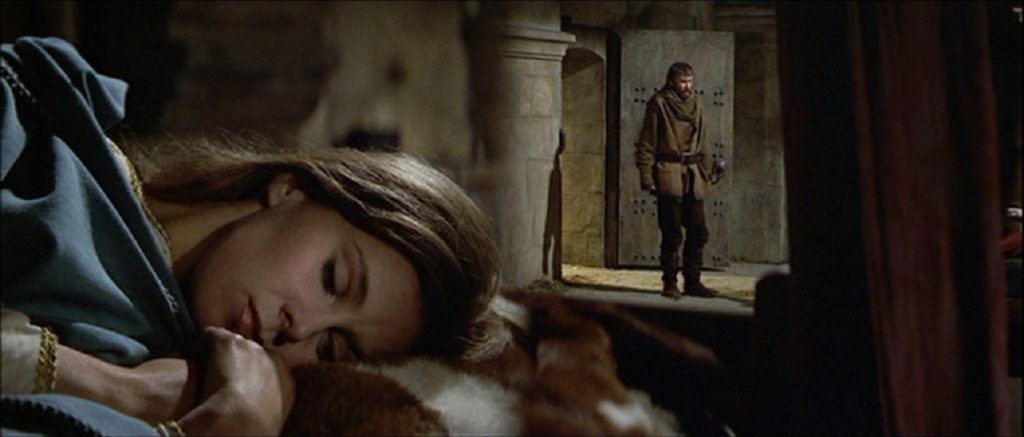
At 50, frost of either a celluloid or fashionable nature would be forgiven for nipping at the heels of a once great artistic beast, but The Lion in Winter plays just as fresh and timely a half century later as my parents undoubtedly saw 50 years ago. Making the Medieval seem contemporary, even if the time and setting retain its hauntingly alien and remote dimensions, the emotions in the playing and the artistry of its visual presentation make for a further timeless quality that will presumably play just as evocatively well a half century from now.
Accompanied by the late director Anthony Harvey’s 2000 audio commentary for that year’s DVD release, which contains illuminating anecdotes about the film’s production and reflections on the film’s reception and legacy, Kino Lorber’s 2018 Blu-ray release preserves and amplifies the widescreen, larger-than-life qualities of the filmed drama, bringing legendary characters from history’s annals to vivid, high-definition life. At film’s end, as Henry stretches out his arms in joyous rapture as his lady’s barge floats back to her tapestried prison, The Lion in Winter may have bridged a closer understanding of those primitive, weather-beaten sculptures — gulfing a millennium of history in the film’s opening credits — between their creation and our viewing of them.
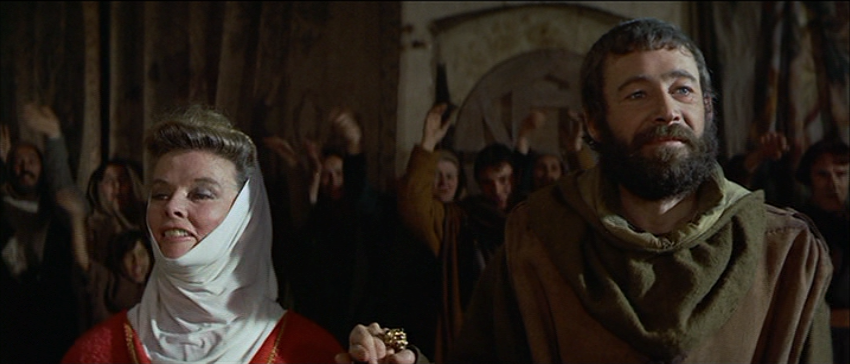
The images used in this review are used only as a reference to the film and are not meant to represent the image quality of Kino Lorber’s 2018 Blu-ray release of 1968’s The Lion in Winter.


